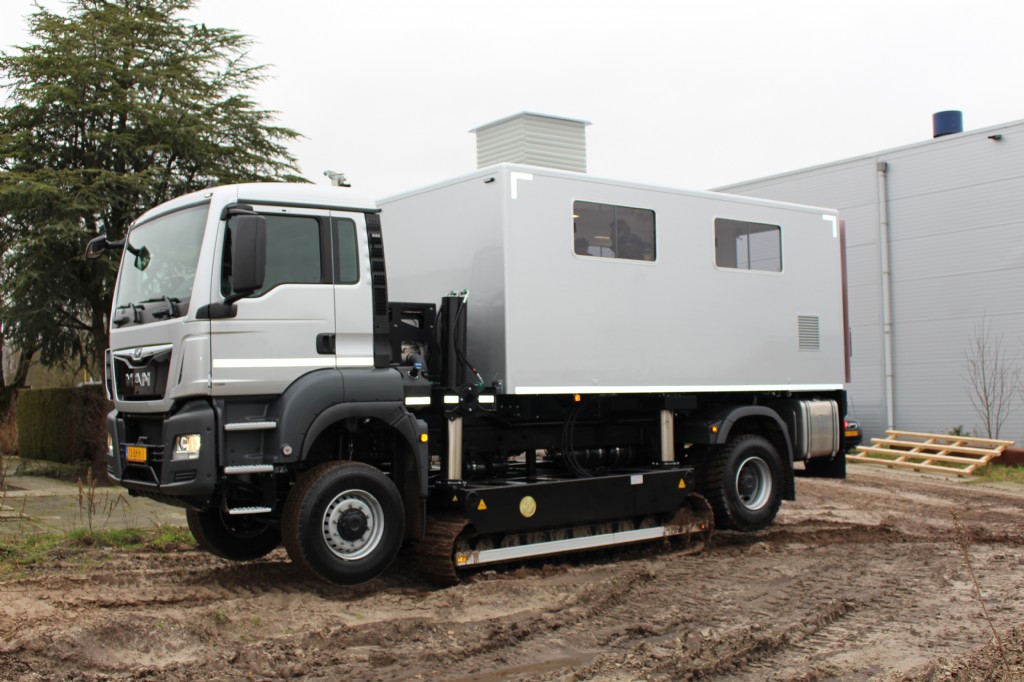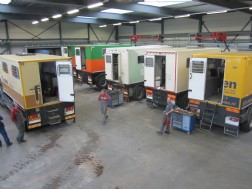For more than 50 years A.P. Van den Berg designs and supplies advanced equipment for this expertise. The company in Heerenveen provides the complete package including the CPT equipment, tools and a digital CPT data acquisition/measuring system for onshore, offshore and near shore in. Author Affiliations. Daoudi, 1, 5, 6 P.J. Van den Berg, 1, 5 O. Brands, 4 and W. Steenbergen 1,. 1 Biomedical Photonic. Van Teeffelen, H. Van den Berg Perturbed mechanotransduction by endothelial surface glycocalyx modification greatly impairs the arteriogenic process Am J Physiol, 309 ( 2015 ), pp.
Johannes Antonius Arnoldus 'Joris' van den Bergh (17 February 1882 in Utrecht – 1 July 1953 in the Hague[1]) was a Dutchauthor and journalist. He is considered a pioneer of Dutch sports journalism.[2]
Biography[edit]
He was a versatile athlete; He did speed skating, football and billiards. His greatest passion, however, was cycling. Up to the age of 40 he was an employee at the Nederlandse Spoorwegen, he wrote sports articles for a number of daily and weekly newspapers, but from the turn of the century he spent his spare time writing about the sports that he exerted.[2] From the early 1920s he worked full-time as a journalist and was the Hague sports correspondent for several magazines and newspapers, including 'Sports', 'Sports World', 'Sporty' and 'Panorama', for many years. His articles were of a biting style.[3]
In 1928, he wrote the book 'De Wielersport begint' (The Cycling Begins), which portrays the beginnings of racing in the Netherlands. In the following year he wrote 'Te midden der kampioenen' (Among the Champions) about the multiple world champion Piet Moeskops and his special discipline Sprint (cycling). In 1941 he published the Sports Psychology works 'Werk Mysterieuze Krachten in de Sport' (Mysterious Forces at Work in Sport). He noted that 'the muscles that provide the power, have no value without the will of the spirit'.[3] the latter two books are considered classics of cycling literature and are still widely read today.
It was due to Van den Bergh's initiative, that in 1936 the first four-piece Dutch national team appeared at the 1936 Tour de France. They were helped by having the support of his Flemish colleague Karel Van Wijnendaele, and the failure of the Italian driver because of the Second Italo-Abyssinian War.[4] As the driver Theo Middelkamp said to Van den Bergh: 'But Joris, I have never seen a mountain.'[5] Mahi started and won a heavy mountain stage and finished 23rd overall. Van den Bergh himself however didn't go to France, but instead focused on reporting the event from home, on the basis of articles in other Belgian newspapers, telex and telephone conversations with the racers.[4] Van den Bergh went to the 1939 Tour de France, 1948 Tour de France and 1949 Tour de France acting as the team leader at the tours.[5] In 1939 he was driven there by his Chauffeur.
Van den Bergh's real love however was track cycling, and his affinity and knowledge of road cycling were significantly lower. From this period dates the anecdote that Van den Bergh thought cyclists have it easier than their companions in the hot, narrow cars where they couldn't feel the cooling wind. Also he fell victim to the miscalculation, that the Italian racer Fausto Coppi was nothing more than 'een mannetje met een tip bristle' ('a male with a chicken breast').[2]
In the 1930s, Van den Bergh took the view that a Europe under German leadership was 'not a bad idea' which caused bad blood among his colleagues.[2] Also in August 1942 he took part in the NSB a meeting about Nazi occupation of the Netherlands. Sports journalists gathered in Valkenburg[6] and praised this meeting in the magazine 'De Nederlandsche Journalist' (The Dutch Journalist) as a 'historic moment'. His enthusiasm was based on a speech by the Secretary of State for education and arts, Tobie Goedewaagen [nl], which had highlighted the importance of sports journalism.[7] In 1944 however he published the brochure 'De post in de vloeiweide' (The post in the rolling meadow). In it he described the attack by 'rogue of the SS' on a radio station for Dutch resistance near Breda, where nine Dutch people including one child were killed, and eight more people were executed the next day. Van den Bergh, knew some of the people that were killed, and made it no secret that he now hated the Germans.
Another passion of Van den Bergh was the Utrecht family circus 'Circus Van Bever' (Valentine Circus), he spent a lot of time with them and wrote a book about it in 1946.[1]
On 1 July 1953, he died of a heart attack. In one of his last articles about cycling, he condemned doping and conspiracy writing: 'As long as the deceiver is deceived, the desire to win prevails.' Four weeks after his death, on 28 July 1953, the Dutch national team were victorious at the 1953 Tour de France, they were solemnly received by 35,000 spectators at the Olympic Stadium (Amsterdam). Thousands of people stood up for two minutes silence in commemoration of Van den Burgh.[8]

Publications[edit]
- 'De wielersport starts'. 1928
- Te Midden of Kampioenen. 1929
- Mysterieuze crashed in de sport. With an afterword by Karel Lotsy [nl]. 1941 (on German: 'mysterious forces in the sport.) The secrets of mental training '. From the Dutch. by Christoph Bönig. Covadonga Verlag [de] 2010, ISBN978-3-936973-43-3)
- 'The post in the rolling meadow'. Breda 1944 (Zusammenfassung: 'the Post in the Rolling meadow (summary of a report by Joris van den Bergh)'. hhbest.nl. Retrieved 20 December 2014.)
- 'The circus draws'. Amsterdam 1946
Literature[edit]
- Ron Couwenhoven: 'Surrounded fifty years of champions. Life and work of Joris van den Bergh'. The outside players 2010, ISBN978-9071359231 (English)
References[edit]
- ^ abG.W. Overdijkink (12 November 2013). 'Bergh, Antonius Johannes Arnoldus van den = Dutch (1882-1953)'. biographical Woordenboek van Nederland (in Dutch). Retrieved 21 December 2014.
- ^ abcdGijs Zandbergen (October 10, 1996). 'pioneer van de sportjournalistiek'. de Volkskrant (in Dutch). Retrieved 20 December 2014.
- ^ ab'authur: Joris van den Bergh'. Wielersportboeken (in Dutch). Retrieved 20 December 2014.
- ^ abJeroen Wielaert (July 5, 2009). 'ALTIJD DE TOUR 2: de stage van Joris'. Nederlandse omroep Stichting (in Dutch). Archived from the original on 21 December 2014. Retrieved 21 December 2014.
- ^ ab'Bergh, Joris van den'. eengoedsportverhaal.nl (in Dutch). Retrieved 21 December 2014.
- ^Adriaan Venema: 'Schrijvers, uitgevers-en hun collaboratie. Part 4: Uitgevers en boekhandelaren '. Amsterdam 1992 p. 289 (Dutch)
- ^'Sportjournaliste te Valkenburg'(PDF). De Nederlandsche journalist. September 1942. Retrieved 22 December 2014.
- ^de Volkskrant = Bart Jungmann (8 October 2010). 'de eerste = Joris van den Bergh, de eerste die zocht naar het waarom'. volkskrant.nl (in Dutch). Retrieved 20 December 2014.
External links[edit]
Media related to Joris van den Bergh at Wikimedia Commons
- Literature by and about Joris van den Bergh in the German National Library catalogue
- Works by or about Joris van den Bergh in libraries (WorldCat catalog)
- Elias van greuning (9 July 2014). 'listen: Tour-radio from 1939 with Joris van den Bergh (Radioreportagen mit j. van den Bergh)'. Sportgeschiedenis.nl. Archived from the original on 20 December 2014. Retrieved 20 December 2014.
- 'sportswriter Joris van den Bergh 70 years (Video mit Interview)'. NPO history. 16 February 1952. Retrieved 20 December 2014.

A.p. Van Den Berg Driver Download

For more than 115 years Thade Gerdes has been a well-known family company from Norden, Germany. The company highly values innovation and has walked hand in hand with the developments in Cone Penetration Testing over the years. In the beginning they performed CPTs with a hand-operated CPT system. In 1972 they began using their first pushing system with a mechanical CPT data acquisition system form A.P. van den Berg. In 1991 Thade Gerdes made the switch to our electrical data acquisition system and added our Vane Tester later on. Recently they invested in an Icone data acquisition system with a Magneto Module. Reason enough to dedicate our Newsletter column “Partners in Geotech” to Thade Gerdes. We spoke with mr Rimt Wortberg, managing director since 2007.
Thade Gerdes GmbH Bohrunternehmen
Thade Gerdes was founded on 1 July 1900. Originally as a blacksmith, but after three generations it has grown into a renowned family company with the focus on water well drilling and onshore and near-shore soil investigation. They use self-built, specialized machines combined with CPT data acquisition systems from us. Thade Gerdes aims to optimize benefits for the customer in each project they execute by offering a complete service package and by reducing costs. Its experienced and committed team selects the most appropriate solution for each specific project and ensures that the customer is always well informed. To enhance its service portfolio Thade Gerdes wanted to add magneto testing and our Icone Magneto Module was considered to be the most valuable option.
Laura Van Den Berg
Mr Wortberg at Thade Gerdes GmbH Bohrunternehmen
What mr Wortberg enjoys most in his work is to see a satisfied customer and to cooperate with such an experienced and motivated team. Motivation and experience are such strong characteristics of Thade Gerdes, because the business activities are in the hands of the family for already three generations. Also, many of its employees start working for Thade Gerdes as a youngster and stay until retirement. Mr Wortberg’s personal drive for working at the family company is his conviction that application of CPTs prior to the construction of housing should be mandatory. This is not yet the case in Germany. By being involved in the application of CPT, mr Wortberg hopes to contribute to the prevention of housing subsidence.
Cooperation with A.P. van den Berg
In our more than 40 years relationship with Thade Gerdes, we have ensured that Thade Gerdes was able to move with the times in performing CPTs. Our innovative nature has always been a key driver for Thade Gerdes to select A.P. van den Berg as their preferred supplier. With their latest purchase, the Icone Magneto technology, the company will initiate changes in the German construction market. The first example, the upcoming project for which the Magneto Module will be used, includes soil investigation focusing on bomb detection. The activities will be performed on Heligoland, a German island in the North Sea. During the Second World War more than 7,000 bombs were dropped here, making this island uninhabitable. Nowadays, construction is hampered by the explosives that are still present in the soil. Thade Gerdes will change this. With the reliable results of the Icone Magneto Module the company will contribute positively to the safe execution of future construction projects.
Future
The interview ends with the question if mr Wortberg wants to mention anything in particular. He replies that on 1 July 2011 Thade Gerdes existed for 111 years, a huge achievement that they celebrated extensively! Furthermore, the project at Heligoland is mentioned as one where the company is very proud of. We feel Thade Gerdes has every right to be proud and we wish the team lots of success for the future!